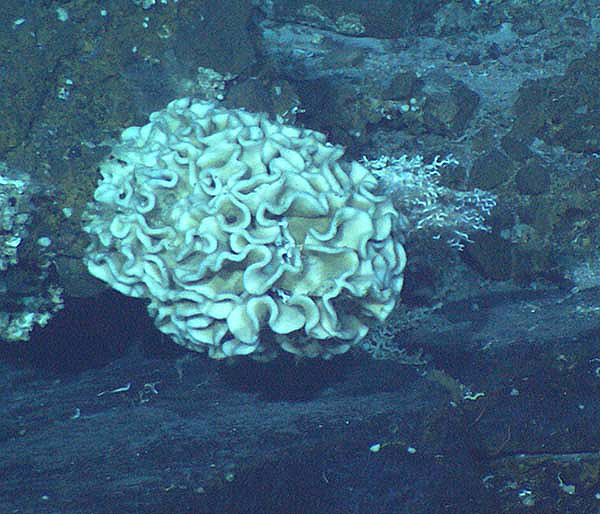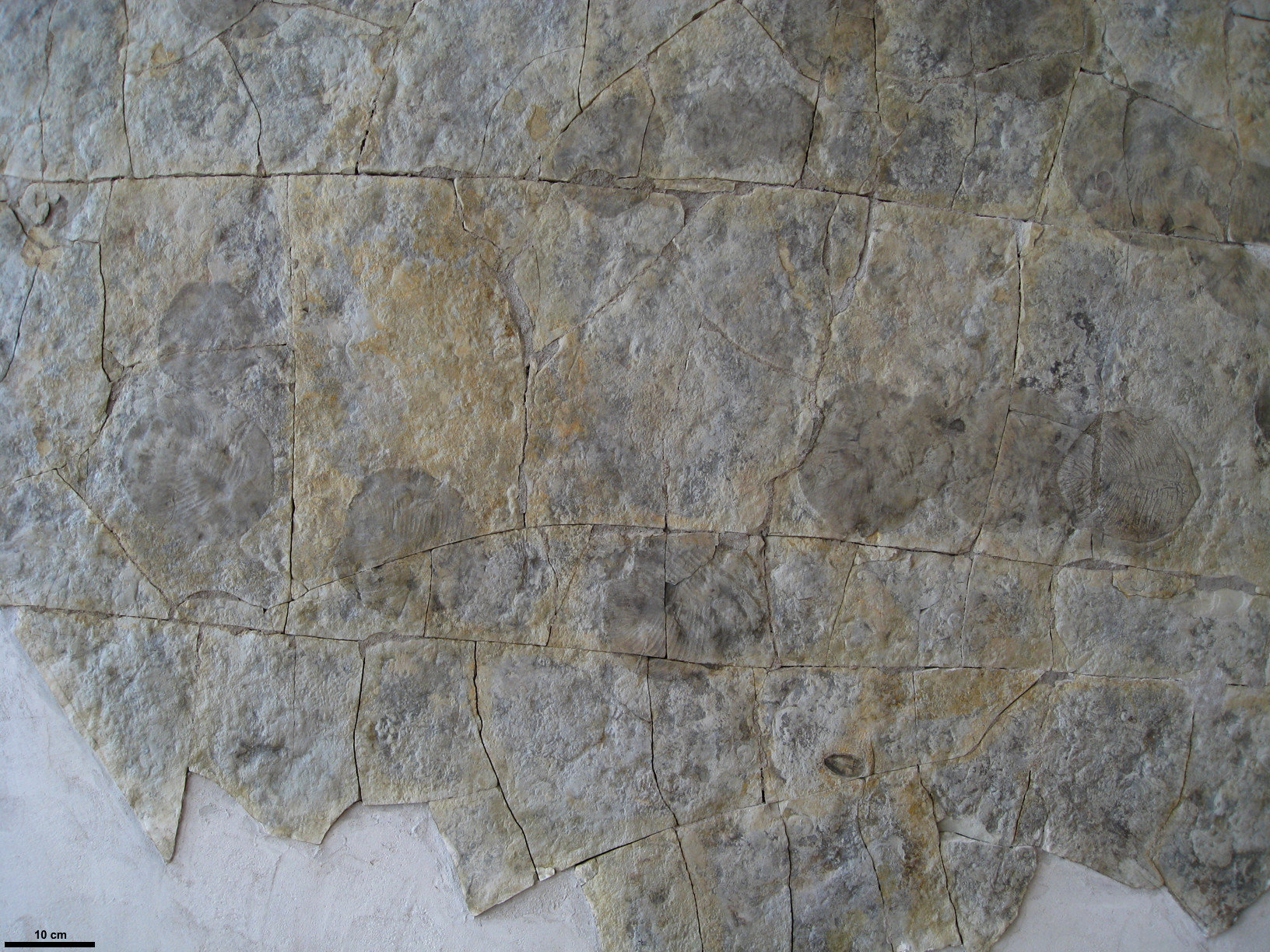 |
| Photograph by Phoebe Cohen |
 |
| A Fungia coral, resembling Dickinsonia. |
Enter the "European School". The antipodean researchers tended to compare differences in Ediacarans, whilst also comparing perceived similarities with modern invertebrates, causing them to see primitive forms of modern taxa. Contrary to this, the 'European School' favoured the idea that the Ediacaran biota were more closely related to each other than to modern organisms. They looked instead to similarities in the fossils as potential homologies. This view began with Pflug in 1970, when he looked at Ernietta and erected his own group Petalonamae. One of the key features here is that the body segments on each side of Dickinsonia and many other Ediacarans is offset slightly - what is known as 'glide symmetry'. Some have seen this as a variation of bilateral symmetry, whereas others see it as excluding them from true bilateria and being a unifying feature of many Ediacaran forms. Pflug saw the Petalonamae as colonial bodies, with segments either side of the centre.
Fedonkin, in 1983, was the first to show that Dickinsonia had glide symmetry, arguing that it was not bilateral. He placed these organisms in his own phylum Proarticulata, which was considered to be an extinct metazoan group, though he did suggest that it might be ancestral to true bilaterians, even linking them to chordates.
The epitome of 'European School' thought is that of Seilacher. He used the shared characters of Ediacaran forms and differences from modern phyla to suggest an extinct kingdom. Over time he reduced it to a phylum and it has been known as Vendozoa, though now more commonly Vendobionta. Seilacher's argument revolved around morphology and taphonomy. He pointed out similarities in structure, including the glide symmetry, but also the 'quilted pneu' structure of the fossils, filled with fluid, unlike any of the organisms they had normally been compared to. Oddly enough though, he reconstructed Dickinsonia as bilateral. The quilt-like structure, he argued, prevented Vendobionts from functioning like modern organisms with which they had been compared. He also claimed that they had a tough, leathery skin, which was integral in their unusual preservation. In one fell swoop Seilacher had steered the study of Ediacarans in new directions (pardon the mixed metaphors). The period became weirder than we had ever imagined and the shoe-horning interpretations of his Australian colleagues did not seem tenable.
 |
| How Seilacher organised his Vendobionts. |
 |
| A 20cm xenophyophore. |
McMenamin envisioned Ediacaran times to be peaceful, with no predation, labelling it the Garden of Ediacara. He also suggested that these large protists (as he also saw them) were symbiotic, containing a large number of smaller protists and bacteria, possibly allowing them to photosynthesise and chemosynthesise.
A heavily contested interpretation of Dickinsonia is that it is connected to fungi and lichens, and the chordate connection resurfaced in 2003. In 2004 Brasier and Antcliffe brought ideas which are, in my eyes, the most sensible suggestion. They appear to be connected to true metazoa, but of a simple grade of organisation, comparable to that of what is informally known as a coelenterate (these have only 2 layers of cells, simply organised, with a hollow body cavity). They also suggested that similar forms (based on lack of clear internal subdivisions), labelled dickinsoniomorphs, may be different variations of the same species, whether it be due to ontogeny, environment or taphonomy. With this interpretation we can see them as connected to modern life in some way, but still an evolutionary experiment which largely failed; we can happily state that we don't know what they are, but have ideas of how to classify them and further our understanding.
Much current controversy revolves around trace fossils found of dickinsoniomorphs. The most well known are those of Yorgia, where resting traces were found next to a preserved print of the causative organism (they are clearly the same organism and are preserved in opposite relief to Yorgia). This was seen as clear evidence of motility in Dickinsonia and its kin. If they had been skip trails then they would have been better aligned than they are, though there are reasons not to take it as evidence of the organism moving on its own. The organism was not heavy enough to cause traces of such depth, which has led many to suggest that they were made through feeding on the underside through absorption of the biomat, possibly using pseudopodia (which led to the suggestion that they were a stem group of the Placozoa as these feed that way and are also seen as a link between protozoa and metazoa, though this comparison is ill-justified). The direction of movement suggests that the organism glided over the surface after it finished feeding, which lacks intentionality and is not the sort of movement associated with metazoa.
 |
| Yorgia resting traces. Beautiful! |
I have mentioned a lot of research within this blog, but due to the hour I am posting and the fact that the paper was very informative, I shall only reference one paper, which is essential reading if you are interested in Dickinsonia:
Brasier, M.D., Antcliffe J.B., 2008. Dickinsonia from Ediacara: A new look at morphology and body construction. Palaeogeography, Palaeoclimatology, Palaeoecology 270, 311–323.

1 comment:
I would recommend "The Rise And Fall of the Ediacara Biota" (Fedonkin et al. 2007) for a good run-down on the various conflicting views within the field.
What Brasier & Antcliffe call the "Australian School", Rise-and-Fall calls the "Adelaide School". I think some of us Australian Ediacaran-fans were mildly amused by Brasier's characterisation, as many of us fall into what Brasier would call the "European School".
It is a set of views championed by M.F. Glaessner (he apparently regarded himself as a bit of a Devil's Advocate after the Adelaide School began to be challenged), but if you check the literature, you'll find researchers from Australia with a diversity of views. (see, for example, the work of Richard Jenkins).
Post a Comment